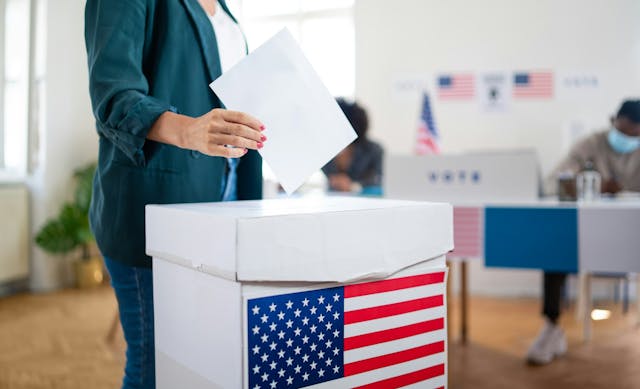The Independent movement of 2012 has already begun in 2010

Political pundits and news commentators continue to speculate about the possibility of a strong third party or Independent political movement arising as we approach the 2012 presidential elections. But, in doing so, they overlook the third party and Independent political movements taking shape across the country right now, in 2010.
In his Sunday column for the New York Times, Thomas Friedman predicted the rise of a serious third party threat to the Democratic-Republican political duopoly in the presidential election of 2012. “Barring a transformation of the Democratic and Republican Parties, there is going to be a serious third party candidate in 2012, with a serious political movement behind him or her,” Friedman wrote. In the political blogosphere, which is dominated by Democrats and Republicans, of course, the response was largely critical. However, Friedman received significant support from well-known political statistician Nate Silver, who argues, against the grain of the conventional wisdom, that the “odds against a third-party bid are not as long as they seem.”
In a lengthy post at FiveThirtyEight, Silver provided fifteen reasons in support of the idea that the current political climate is favorable for a third party candidate in 2012. Among other things, Silver suggested that a weak Republican candidate would act as a spur to third party or Independent hopefuls. He highlighted the fact that voters currently have extremely low opinions of both major parties, that there is an increasing number of voters who refuse to identify themselves as Democrats or Republicans, and that there are a number of pressing issues on which neither the Democrats nor Republicans have much, if any, credibility.
Though the immediate context of this discussion is the menu of options for the 2012 presidential election, it stands to reason that those aspects of the current political climate would also prove favorable for third party and Independent candidates in Congressional, state and local offices this year. Indeed, one need only consider a handful of the most prominent third party and Independent gubernatorial candidates across the country to be convinced. Independent Political Report has just released a handy list of its gubernatorial rankings for the 2010 elections, which considers the prospects of the nation’s top ten third party and Independent candidates for governor (Full disclosure: I am a contributor to IPR.) In any number of these races, we can see how the political dynamics delineated by Silver are contributing to the strength of the given gubernatorial candidate.
Though Democrats dominate Rhode Island’s state legislature and its Congressional delegation, almost 50% of the state’s voters are Independents. In other words, the ranks of unaffiliated voters rival those of Democrats and Republicans combined! Given this state of affairs, it is no surprise that Independent Lincoln Chafee began the race with an early lead. Widely viewed as the most liberal candidate in the contest, Chafee is now running neck and neck with Democrat Frank Caprio. Colorado’s gubernatorial contest demonstrates how a flawed or weak major party candidate can provide a third party hopeful with an opening to significantly alter the outcome of the election. As the Constitution Party’s candidate for governor, former Republican Congressman Tom Tancredo has displaced Republican Dan Maes as the primary challenger to Democrat John Hickenlooper, who leads in the polls. As Daniel Surman writes in the above article at IPR:
“More than anything else Tancredo has been abetted by the collapse of his Republican opponent. Maes has wracked up multiple fines for campaign finance violations. In addition, the Denver Post exposed some mischaracterizations of his time as a Kansas police officer.”
Perhaps one might argue that Chafee and Tancredo are exceptional candidates, insofar as both were prominent, nationally-known politicians with a major party before their respective Independent and third party gubernatorial bids. Yet, the same cannot be said, for instance, of Eliot Cutler in Maine and Tom Horner in Minnesota.
As the candidate for the Independence Party, Horner may well follow in the footsteps of Jesse Ventura, who was elected governor of Minnesota on the IP ticket in 1998. Yet, the two could not be more different. As IPR notes, Horner is “not a typical IP candidate.” He has received the endorsements of former US Senator Dave Durenburger as well as former Governor Arne Carlson (both Republicans), and has significant ties to the state’s business community. Horner’s recent surge in the polls to just under 20% has quickly made him the target of Democratic and Republican interest groups alike.
Finally, Maine is rather similar to Rhode Island, in that Independents constitute a large block of registered voters at 38%, with Democrats and Republicans making up roughly 60% of the electorate. Despite the weakness of the Democratic and Republican candidates for governor, Eliot Cutler’s campaign has been running in place in the polls, as it were, due to significant competition from two other Independent candidates, Shawn Moody and Kevin Scott. Taken together, the three Independents are garnering around 20% support in the contest. However, the very fact that there are three Independent candidates in the race, all of whom are likely to affect its outcome in one way or another, is significant in and of itself, and demonstrates not only the receptiveness of Mainers to political Independents (they have twice elected an Independent governor in the past 35 years), but also shows the desire for Independent alternatives to the dominance of the Democratic and Republican parties.
As these four gubernatorial candidates reveal, we will not have to wait until 2012 to see the rise of an Independent, third party political movement in the United States. It already appears to be upon us.




